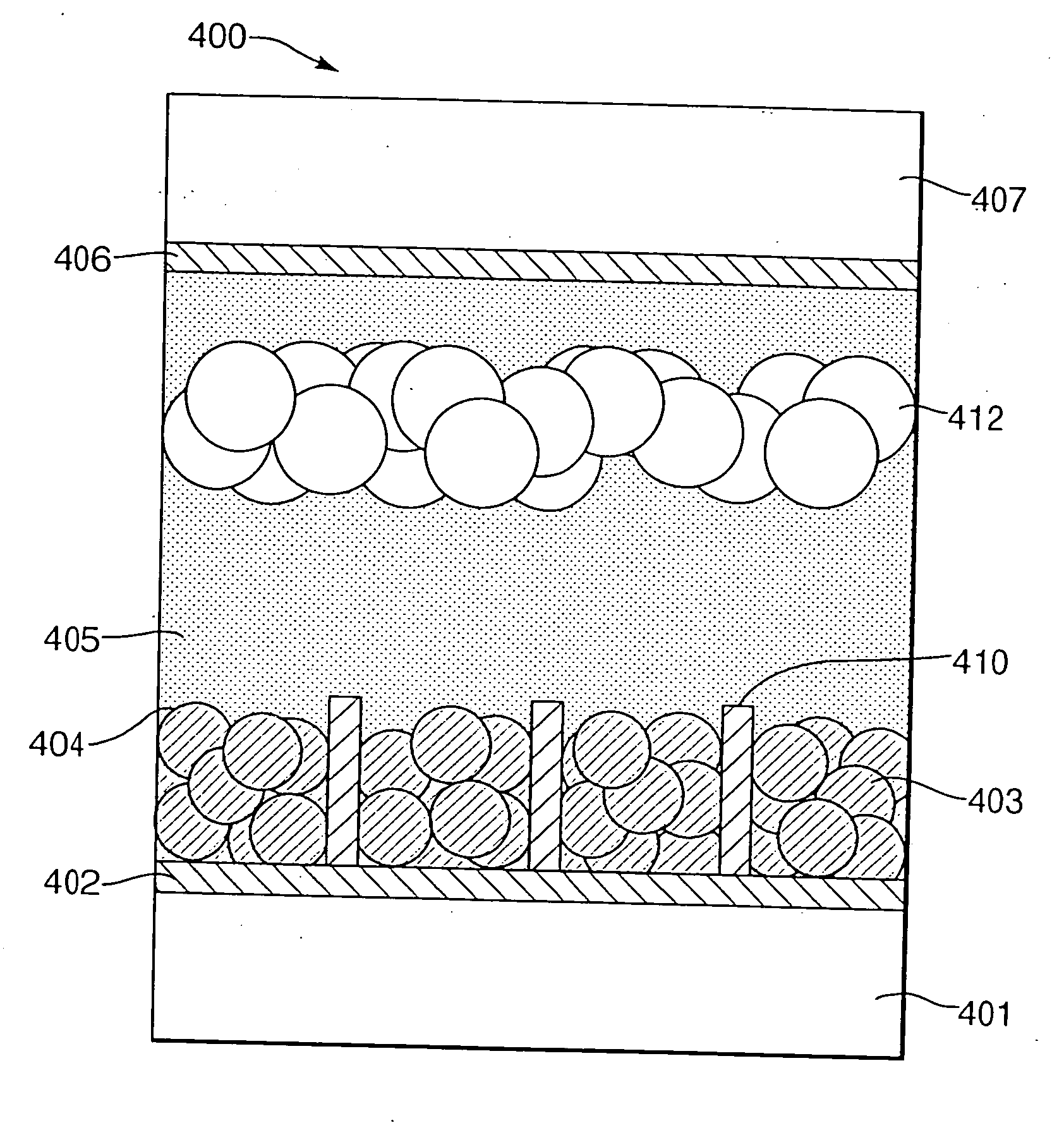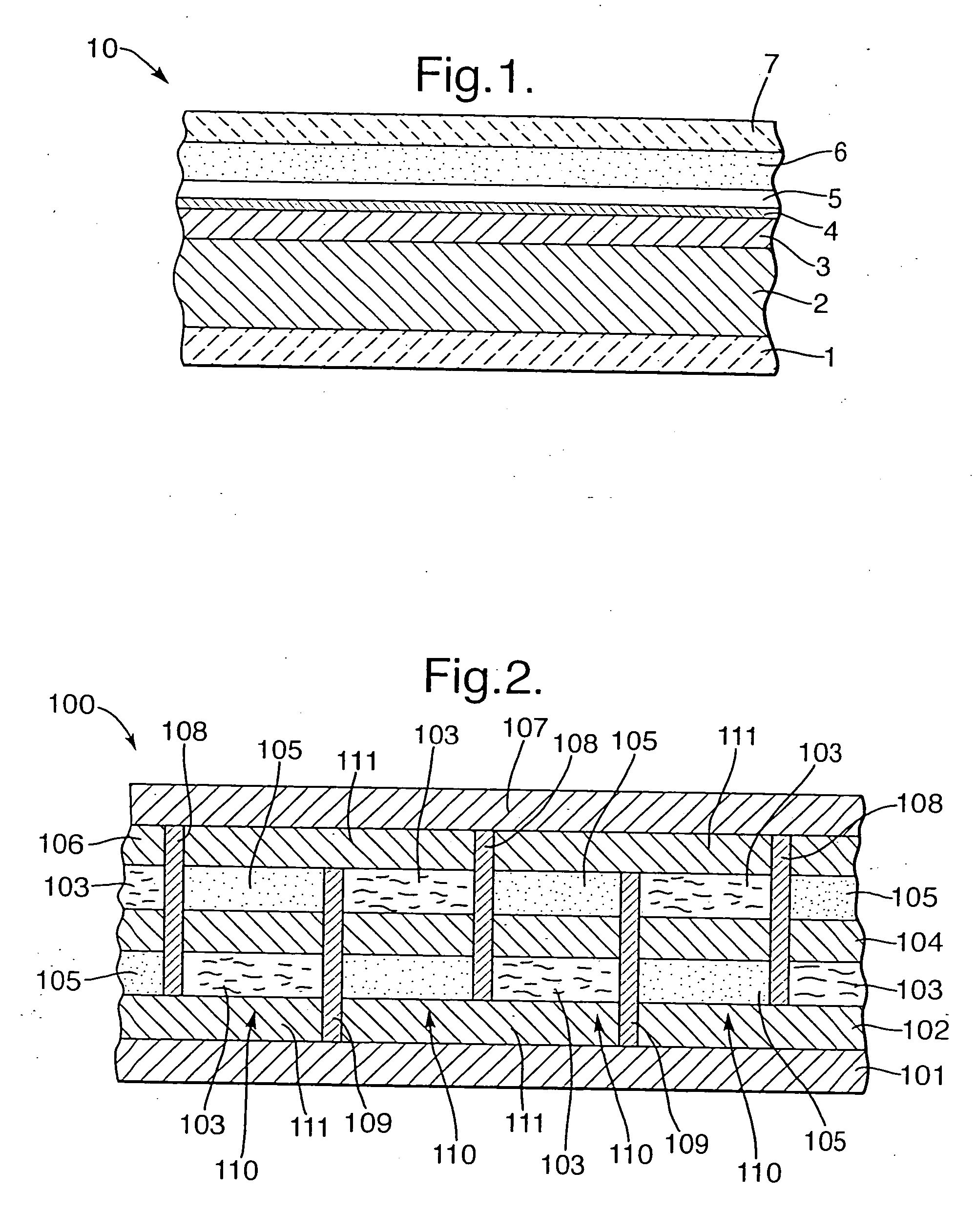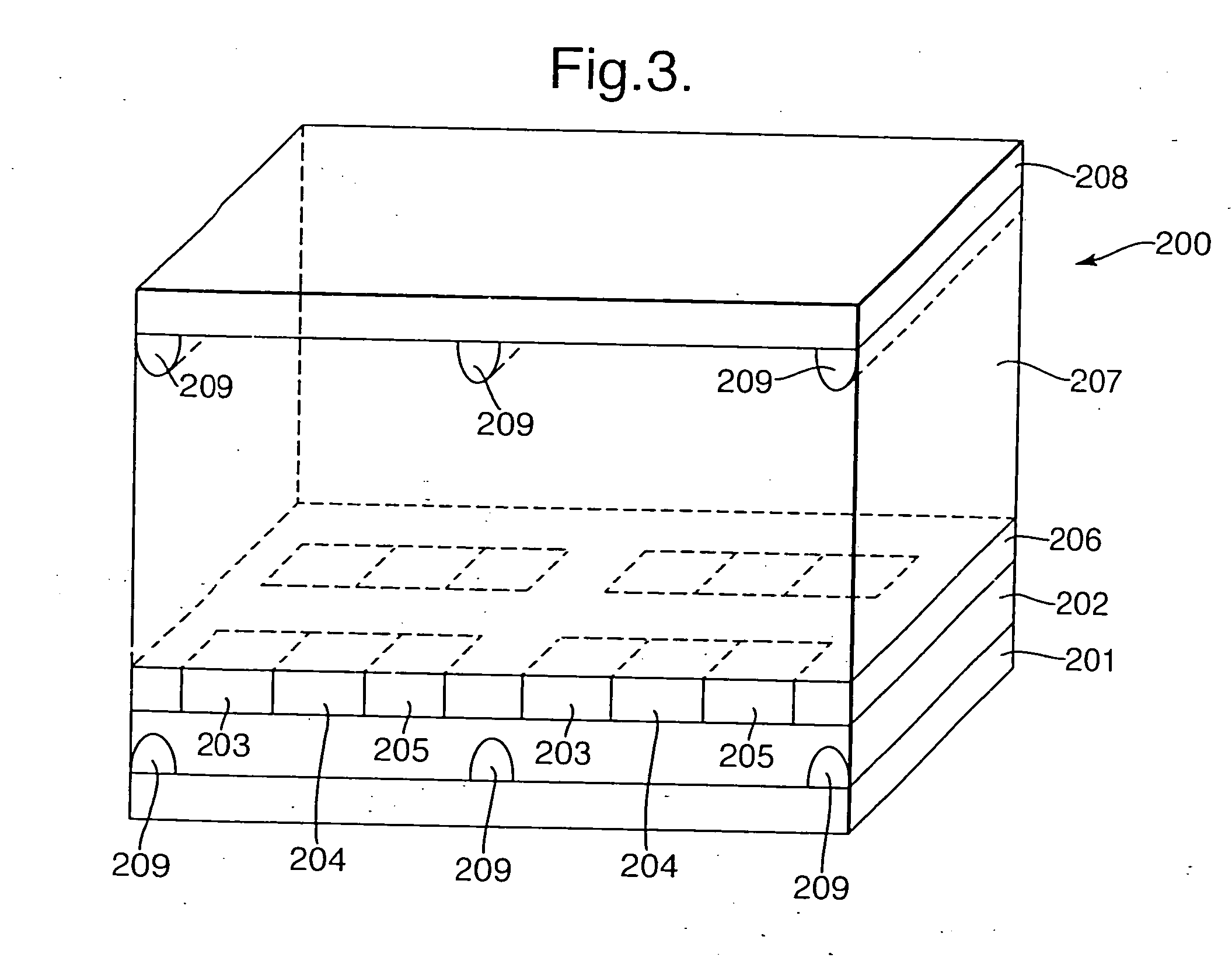Electrochemical cell structure and method of fabrication
- Summary
- Abstract
- Description
- Claims
- Application Information
AI Technical Summary
Benefits of technology
Problems solved by technology
Method used
Image
Examples
Embodiment Construction
[0054] The present invention relates to an electrochemical cell such as a Dye Sensitised Solar Cell (DSSC) or an electrochromic display (ECD). One electrochemical cell 400 of the present invention comprises, with reference to FIG. 4, a first transparent insulating substrate layer 401; a first transparent conductive oxide (TCO) electrode layer 402; a metal oxide layer 403; a sensitiser (dye) / electrochromic material layer 404; an electrolyte layer 405; a second TCO electrode layer 406; and a second transparent insulating substrate layer 407.
[0055] The first and second transparent insulating substrate layers 401, 407 are preferably glass or plastic. The metal oxide layer 403 is preferably titanium dioxide (TiO2) and is a semiconductor.
[0056] The metal oxide layer 403 should preferably be a material which promotes intimate adhesion of the sensitiser (dye) / electrochromic material layer 404 on its surface. Additionally, the particles of the metal oxide layer 403 must be reasonably light...
PUM
 Login to View More
Login to View More Abstract
Description
Claims
Application Information
 Login to View More
Login to View More - R&D
- Intellectual Property
- Life Sciences
- Materials
- Tech Scout
- Unparalleled Data Quality
- Higher Quality Content
- 60% Fewer Hallucinations
Browse by: Latest US Patents, China's latest patents, Technical Efficacy Thesaurus, Application Domain, Technology Topic, Popular Technical Reports.
© 2025 PatSnap. All rights reserved.Legal|Privacy policy|Modern Slavery Act Transparency Statement|Sitemap|About US| Contact US: help@patsnap.com



